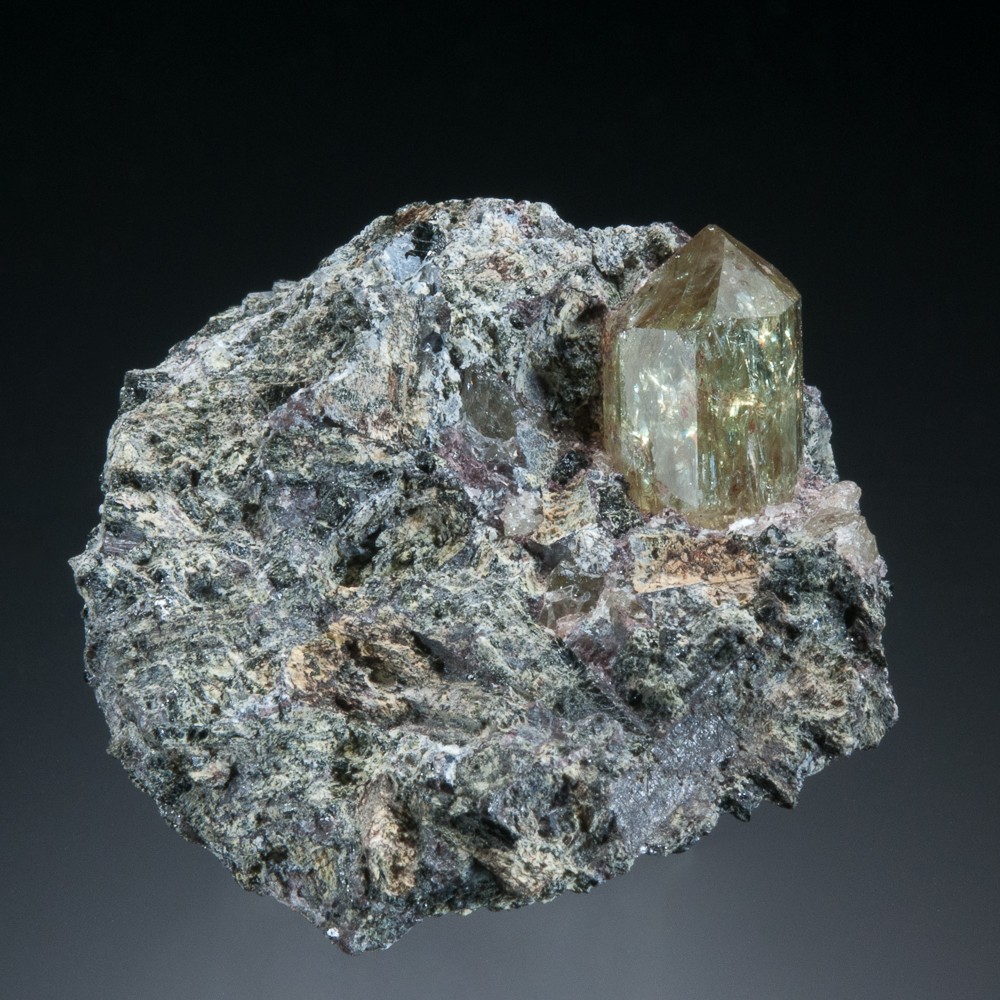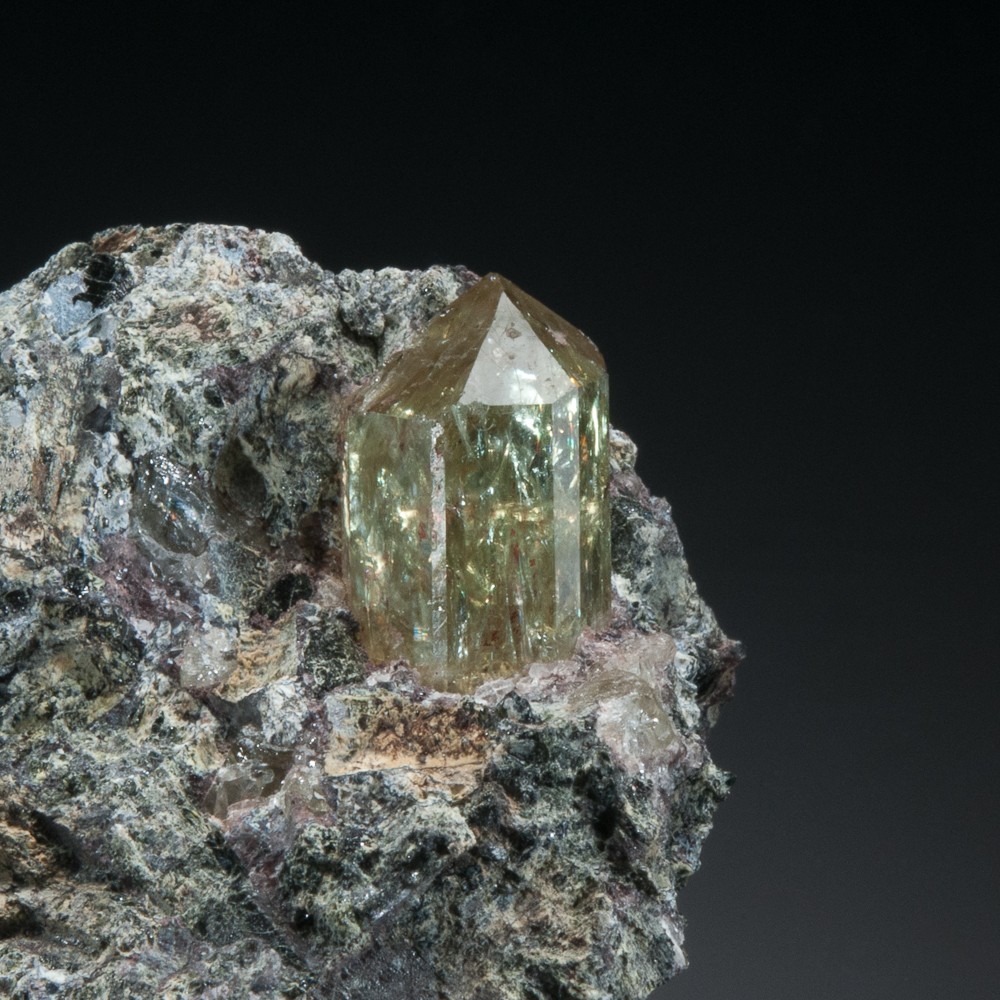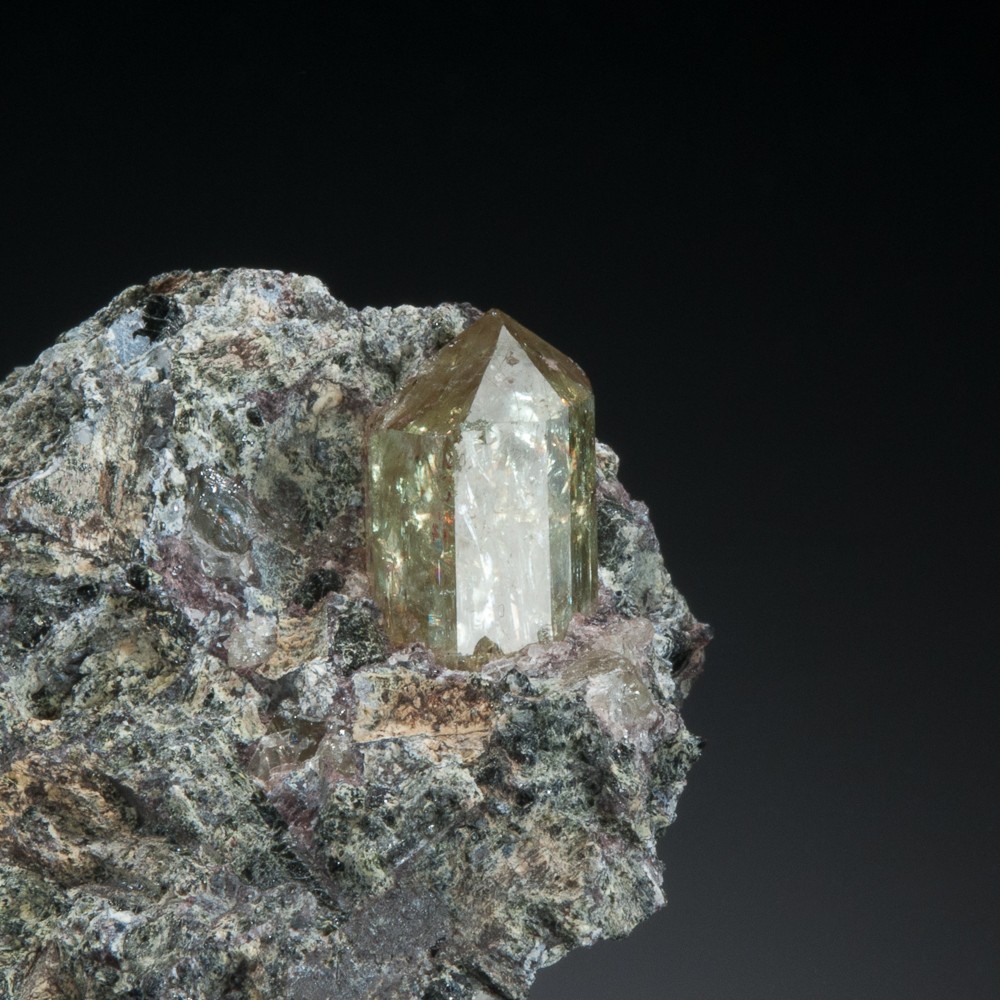Description
Detailed Description
A beautiful sharp, glassy, lustrous fluorapatite crystal in a matrix of pyroxene and quartz. This crystal has beautiful internal reflections. In excellent condition – minor edge chipping, the largest of which is at the back against the pyroxene. The crystal extends into the matrix, 1.4 cm is exposed. This one sparkles and glows under good light.
About These Fluorapatites
Cerro de Mercado is still a producing iron mine, and the fluorapatite crystals in this lot were collected this year. As contemporary mining and sorting/separation have become mechanized, and also owing to the fact that the apatite at the mine is now concentrated for its phosphate value, the preservation of fine fluorapatite crystals and matrix specimens is a greater challenge than it used to be. Damage is still a rampant problem. I selected the few fine pieces here out of a lot of hundreds of specimens, offered by a seller who lives beside the mine. Although it is likely that specimens will continue to be produced for as long as the mine continues to operate, it is also likely that fine undamaged specimens will continue to be hard to obtain.
The definitive article on this locality is Wendell Wilson’s excellent piece in the Mineralogical Record, Special Issue – Mexico VI, Vol. 42:5, Sept-Oct 2011.




